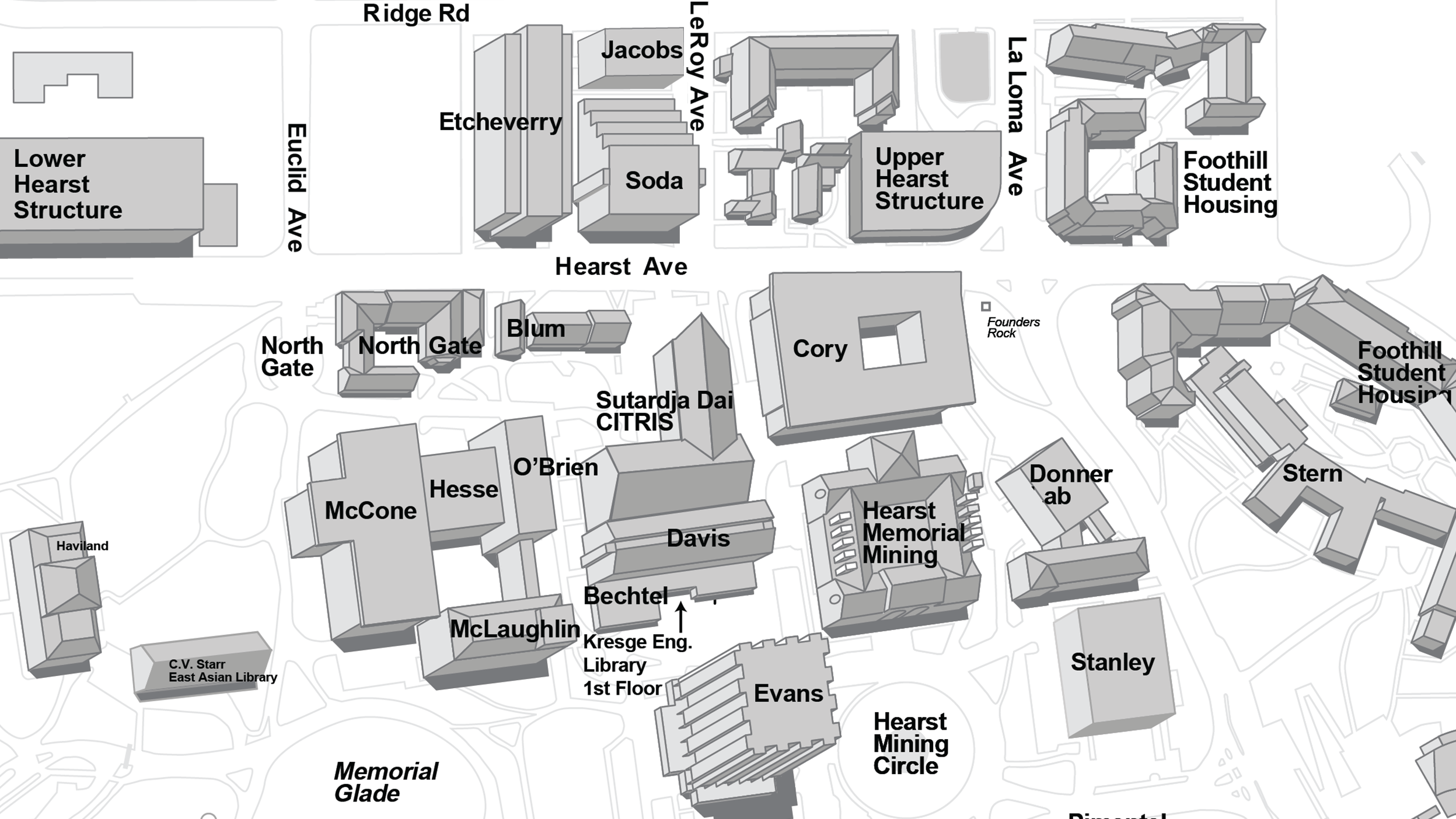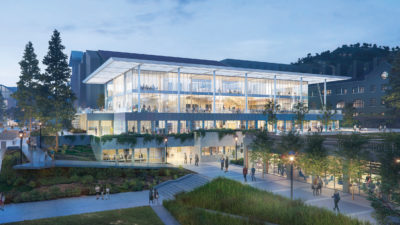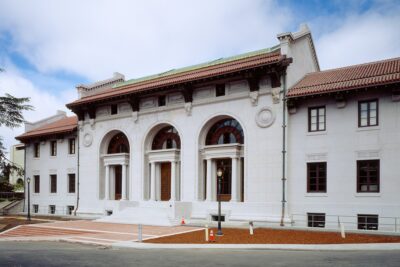 Engineering campus scenes: Sculpture in Mining Circle reflecting pool. (Photo by Noah Berger)
Engineering campus scenes: Sculpture in Mining Circle reflecting pool. (Photo by Noah Berger)Buildings & facilities
Berkeley Engineering, the second largest college at UC Berkeley, conducts research, instructional and administrative activities in more than a dozen buildings on the Berkeley campus, utilizing well over one million square feet of space. The college also has extensive large-scale engineering research facilities, including one of the world’s largest earthquake simulators, located at the 170-acre Richmond Field Station site about seven miles northwest of campus.
From state-of-the-art research laboratories to student study centers and libraries, these facilities help support the academic mission of Berkeley Engineering. These are the spaces where bold, new ideas are formed, tested and reinvented. They are where students and researchers gather to challenge conventional beliefs and methods.
Below is brief description of Berkeley Engineering’s primary facilities. Click on a thumbnail for a larger photo.

Contact
College of Engineering Facilities Office
205 McLaughlin Hall # 1700
Berkeley, CA 94720-1700
coe-facilities@berkeley.edu
Hours: Monday – Friday, 8 a.m.–noon and 1–4 p.m.
In this section
Engineering Center
Engineering Student Services, Kresge Engineering Library, Sibley Auditorium.
Under construction: Anticipated completion in early 2025 | Construction update











